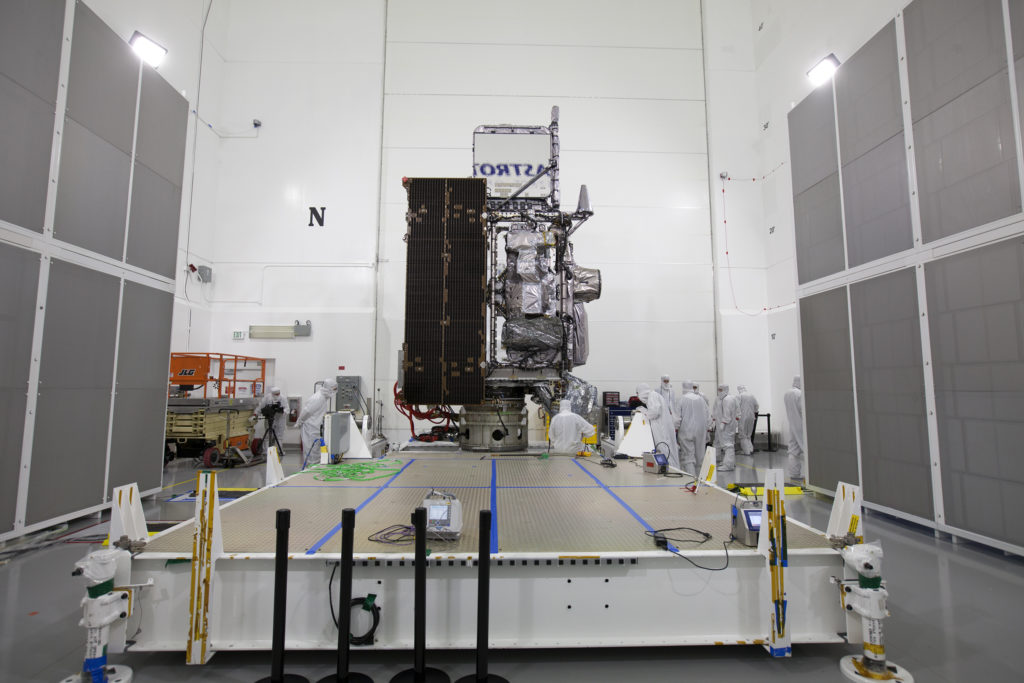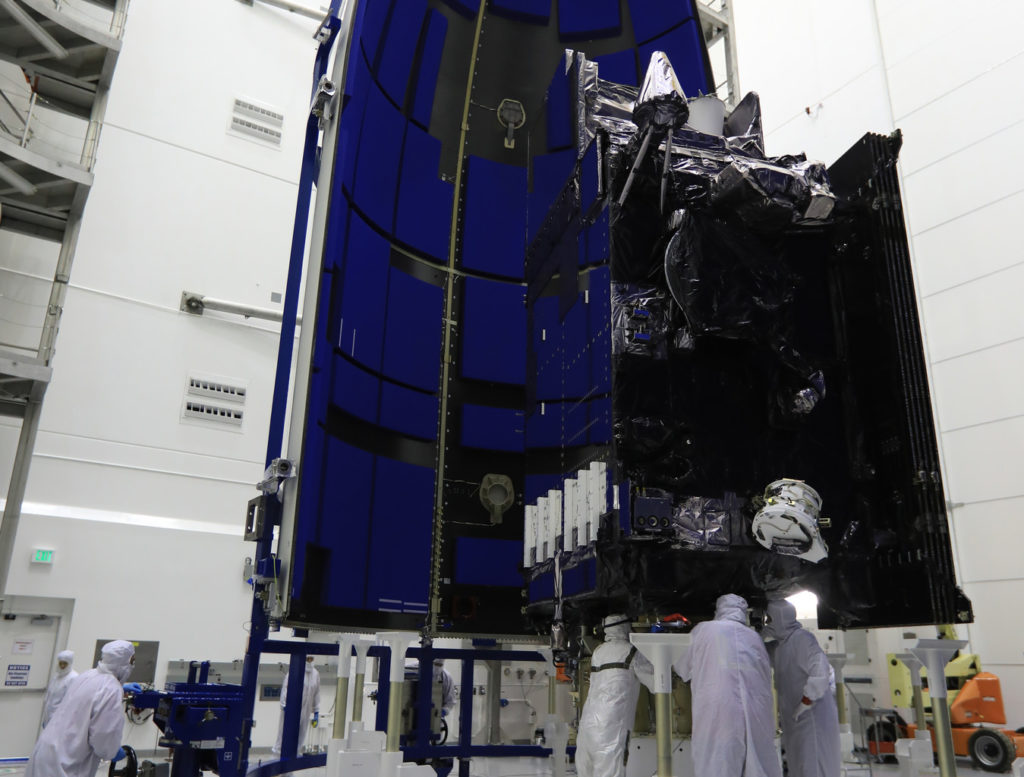 Managers from NASA, NOAA, USAF 45th Space Wing and United Launch Alliance gave a unanimous “go” for launch of the GOES-R spacecraft Saturday at 5:42 p.m. EST on a United Launch Alliance Atlas V rocket. The decision followed this morning’s launch readiness review at Kennedy Space Center in Florida.
Managers from NASA, NOAA, USAF 45th Space Wing and United Launch Alliance gave a unanimous “go” for launch of the GOES-R spacecraft Saturday at 5:42 p.m. EST on a United Launch Alliance Atlas V rocket. The decision followed this morning’s launch readiness review at Kennedy Space Center in Florida.
Weather forecasters predict a 90 percent chance of favorable weather for the 1-hour launch window Saturday at Space Launch Complex 41. A prelaunch news conference will be televised at 1 p.m. today on NASA Television’s Public Channel. Afterward, a NOAA GOES-R mission briefing will air on NASA Television’s Media Channel.
The GOES-R spacecraft is shown above during processing at the Astrotech facility in Titusville, Florida, near Kennedy. Photo credit: NASA/Charles Babir
GOES-R, a National Oceanic and Atmospheric Administration mission, is the first spacecraft in a new series of NASA-built advanced geostationary weather satellites. Once in geostationary orbit, GOES-R will be known as GOES-16 and will provide images of weather patterns and severe storms as regularly as every five minutes or as frequently as every 30 seconds. These images can be used to aid in weather forecasts, severe weather outlooks, watches and warnings, lightning conditions, maritime forecasts and aviation forecasts. It also will assist in longer term forecasting, such as in seasonal predictions and drought outlooks. In addition, space weather conditions will be monitored constantly, including the effects of solar flares to provide advance notice of potential communication and navigation disruptions. It also will assist researchers in understanding the interactions between land, oceans, the atmosphere and climate.

 Weather forecasters from the U.S. Air Force 45th Weather Squadron are predicting a 90 percent chance of favorable weather for the one-hour launch window Saturday at Space Launch Complex 41 on Cape Canaveral Air Force Station in Florida for the liftoff of the GOES-R spacecraft atop a United Launch Alliance Atlas V rocket. The spacecraft is seen above in processing as it was lifted to the top of the Atlas V.
Weather forecasters from the U.S. Air Force 45th Weather Squadron are predicting a 90 percent chance of favorable weather for the one-hour launch window Saturday at Space Launch Complex 41 on Cape Canaveral Air Force Station in Florida for the liftoff of the GOES-R spacecraft atop a United Launch Alliance Atlas V rocket. The spacecraft is seen above in processing as it was lifted to the top of the Atlas V.